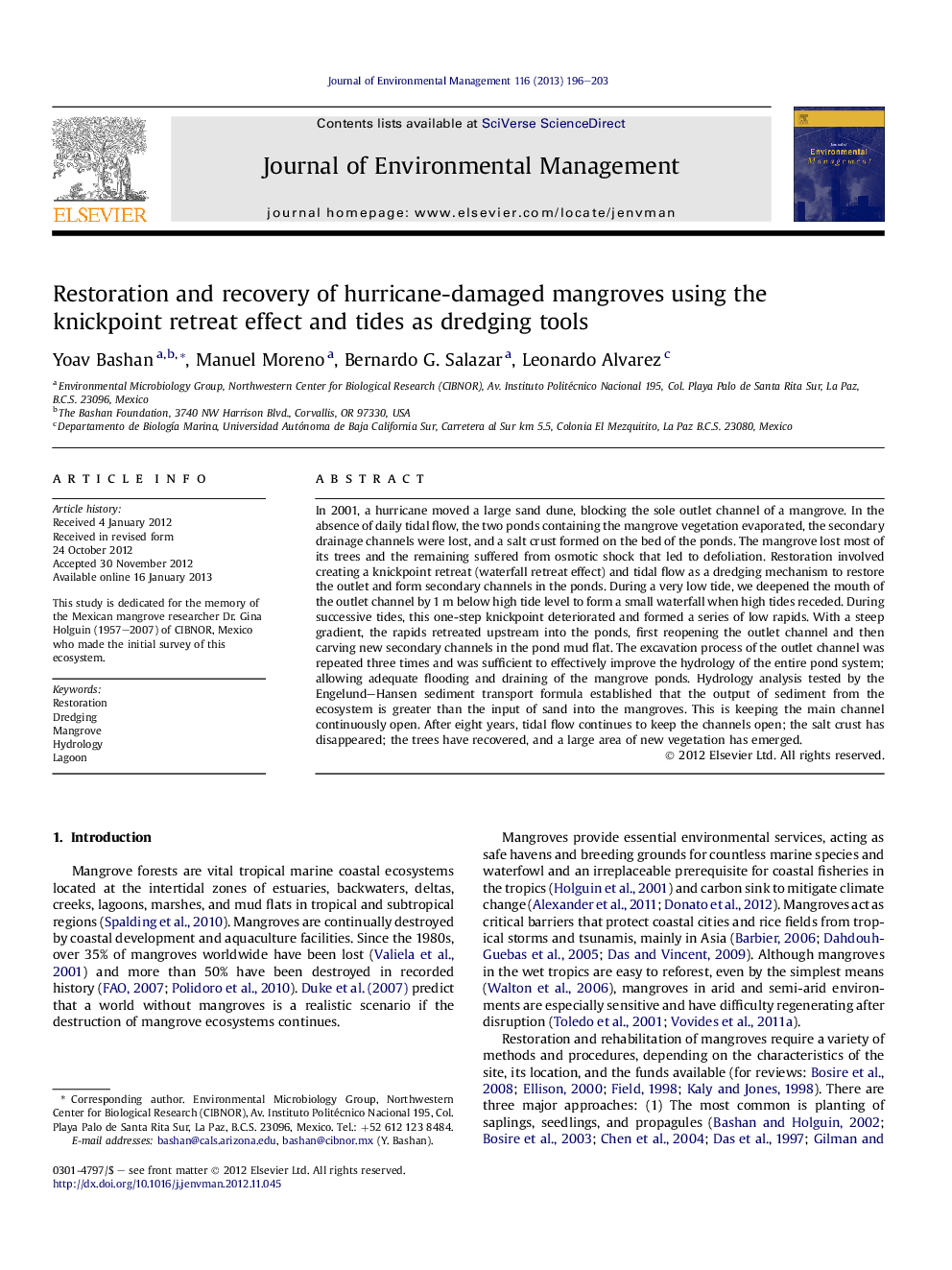| Article ID | Journal | Published Year | Pages | File Type |
|---|---|---|---|---|
| 1056396 | Journal of Environmental Management | 2013 | 8 Pages |
In 2001, a hurricane moved a large sand dune, blocking the sole outlet channel of a mangrove. In the absence of daily tidal flow, the two ponds containing the mangrove vegetation evaporated, the secondary drainage channels were lost, and a salt crust formed on the bed of the ponds. The mangrove lost most of its trees and the remaining suffered from osmotic shock that led to defoliation. Restoration involved creating a knickpoint retreat (waterfall retreat effect) and tidal flow as a dredging mechanism to restore the outlet and form secondary channels in the ponds. During a very low tide, we deepened the mouth of the outlet channel by 1 m below high tide level to form a small waterfall when high tides receded. During successive tides, this one-step knickpoint deteriorated and formed a series of low rapids. With a steep gradient, the rapids retreated upstream into the ponds, first reopening the outlet channel and then carving new secondary channels in the pond mud flat. The excavation process of the outlet channel was repeated three times and was sufficient to effectively improve the hydrology of the entire pond system; allowing adequate flooding and draining of the mangrove ponds. Hydrology analysis tested by the Engelund–Hansen sediment transport formula established that the output of sediment from the ecosystem is greater than the input of sand into the mangroves. This is keeping the main channel continuously open. After eight years, tidal flow continues to keep the channels open; the salt crust has disappeared; the trees have recovered, and a large area of new vegetation has emerged.
► A small, arid zone mangrove ecosystem was restored and continues to function seven years later. ► Restoration of the hydrologic system used knickpoint-retreat (waterfall retreat) and tides as dredging tools. ► The vegetation recovered and extended coverage with no further intervention. ► A mathematical model showed that the hydrologic system of the mangrove does not permit sediment to accumulate. ► The cost for rehabilitation was minimal.
